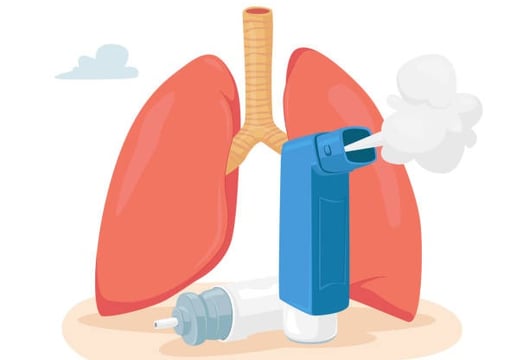What is the Difference Between Asthma and COPD
7/1/20252 min read


Asthma and Chronic Obstructive Pulmonary Disease (COPD) are both chronic lung conditions that affect breathing, but they are different in their causes, progression, and treatment. Asthma typically begins in childhood or adolescence and is often linked to allergies or environmental triggers like pollen, dust, cold air, or exercise. It causes the airways to become inflamed and narrowed, leading to symptoms like wheezing, shortness of breath, chest tightness, and coughing. These symptoms are usually reversible with medication, especially inhalers that contain bronchodilators or corticosteroids.
COPD, on the other hand, usually affects older adults and is most often caused by long-term exposure to harmful substances like cigarette smoke or air pollution. It includes conditions like emphysema and chronic bronchitis and leads to a permanent narrowing of the airways. Unlike asthma, the lung damage in COPD is progressive and not fully reversible. People with COPD often experience a chronic cough with mucus, frequent respiratory infections, and difficulty breathing that worsens over time.
Another key difference is how the diseases respond to treatment and how they progress. Asthma can often be well-controlled with daily medications and by avoiding known triggers, and many people with asthma can lead active, symptom-free lives. COPD, however, usually gets worse over time, even with treatment, and can lead to severe disability. While medications, oxygen therapy, and lifestyle changes like quitting smoking can help manage COPD symptoms, they cannot reverse the damage already done to the lungs. Asthma is a chronic inflammatory condition of the airways that typically starts in childhood or early adulthood. It is often related to allergies or environmental exposures and is triggered by factors such as pollen, dust, pet dander, cold air, exercise, or respiratory infections. During an asthma attack, the airway muscles tighten, the lining becomes inflamed, and excess mucus is produced, making it difficult to breathe. However, these changes are reversible with treatment, especially with quick-relief inhalers and long-term controller medications like corticosteroids. People with asthma often have symptom-free periods between episodes, and the condition can often be well-controlled with proper care and avoidance of triggers.
Chronic Obstructive Pulmonary Disease (COPD) is a progressive lung disease that typically affects middle-aged or older adults, most often those with a history of smoking or long-term exposure to harmful substances such as dust, fumes, or biomass smoke. COPD includes both chronic bronchitis, which involves a persistent cough with mucus production, and emphysema, which involves damage to the air sacs in the lungs. Unlike asthma, the airway obstruction in COPD is not fully reversible, and lung function tends to worsen over time. Symptoms include shortness of breath during activities, chronic cough, wheezing, and frequent respiratory infections. Over time, people with COPD may need oxygen therapy or other advanced interventions.
While both asthma and COPD cause breathing problems and may involve inflammation of the airways, their underlying causes, age of onset, and response to treatment are quite different. Asthma is typically reversible, often allergy-related, and seen in younger people, whereas COPD is irreversible, associated with long-term lung damage, and more common in older adults with a history of smoking. Treatment for asthma focuses on preventing inflammation and avoiding triggers, while COPD management aims to slow disease progression, reduce symptoms, and improve quality of life. Understanding these differences is crucial for accurate diagnosis, personalized treatment, and better health outcomes.